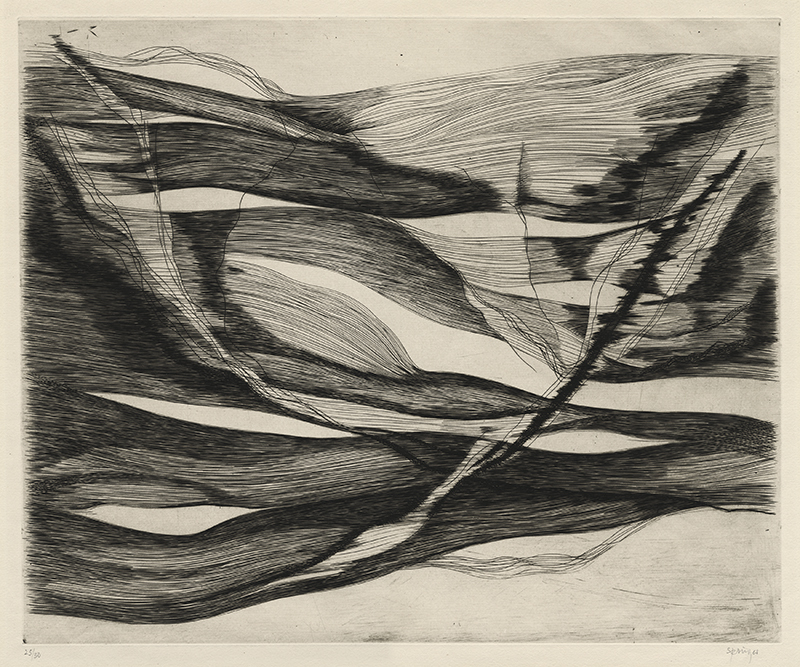
19th, 20th & 21st Century Fine Prints
707-546-7352 · fax 707-546-7924 · web: www.annexgalleries.com · email: artannex@aol.com
Ressac (Surf) by Ferdinand Springer

Ressac (Surf)
Ferdinand Springer
Ressac (Surf)
Ferdinand Springer
1907 - 1998 (biography)Automatic, gestural lines trace the rhythm of ocean movement in Springer’s “Ressac” (“surf”in French). This is a fine example of the influence left on the artist by his time at the Atelier 17 in Paris in the 1930s, decades after working there. Much of what he created at the experimental printmaking workshop was lost during the chaos of World War II; this piece clearly draws from that well of experience, as if showing the viewer a conjured memory wrought upon the sheet.
“Ressac” shows Springer’s complete evolution into abstracted naturescapes. Along the top of the composition is a suggestion of the surface-line of the ocean, beneath it the seeming shapes of trailing seaweed, pulled into the wake of shadowy currents.
Ferdinand Springer, painter and printmaker, was born to a German father and a Swiss mother in Berlin on October 1, 1907. After graduating from high school in Potsdam, he studied art history at the University of Zurich. He began painting in 1927 and visited Milan where he met the Italian painters Giorgio Morandi and Carlo Carrà.
Springer moved to Paris in 1928 where he studied with Roger Bissière at the Académie Ranson. In 1932, he learned intaglio techniques at Atelier 17 in Paris and, in 1937, he traveled to New York where he exhibited at the Julian Levy Gallery. During this time he met Alexander Calder and Salvatore Dali. Springer’s wife was Jewish and his father wanted him to sign papers denouncing her to the Nazi government which he refused to do. After moving to Grasse in southern France in 1939, Springer was interned by the Nazis, along with Max Ernst, Hans Bellmer and Otto Wols at the Camp des Milles near Aix-en-Provence.
After his release in 1940, Springer returned to Grasse and started the “Grasse Group” with Hans Arp, Sonia Delaunay, Alberto Magnelli and others, and produced his first abstract works. With the escalation of the war Springer escaped to Switzerland in 1942 but was not allowed to exhibit his work. He returned to Grasse in 1945 to discover that of most his work was lost.
In 1946, Springer created engravings for Paul Valery’s Eupalinos VI, and in 1952 he relocated to Paris and returned to painting in 1955. He resettled in Grasse in 1960 and became a pioneer in the revival of printmaking, along with Johnny Friedlander, Pierre Courtin, and Henri-Georges Adam. He continued to work and to exhibit throughout Europe and the United States, and in the early 1990s began focusing on painting large canvases. Ferdinand Springer died in Grasse, France on December 31, 1998.


